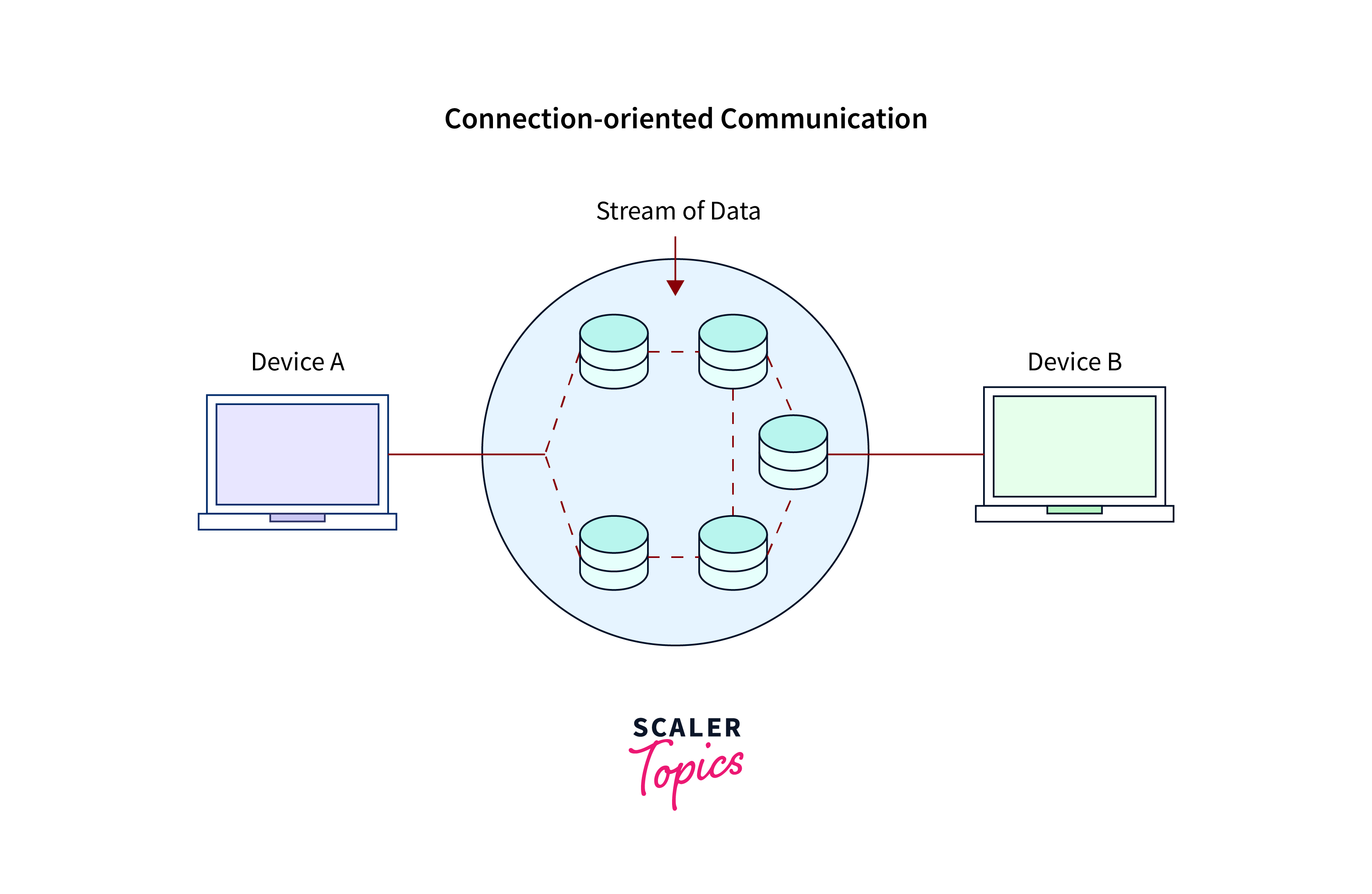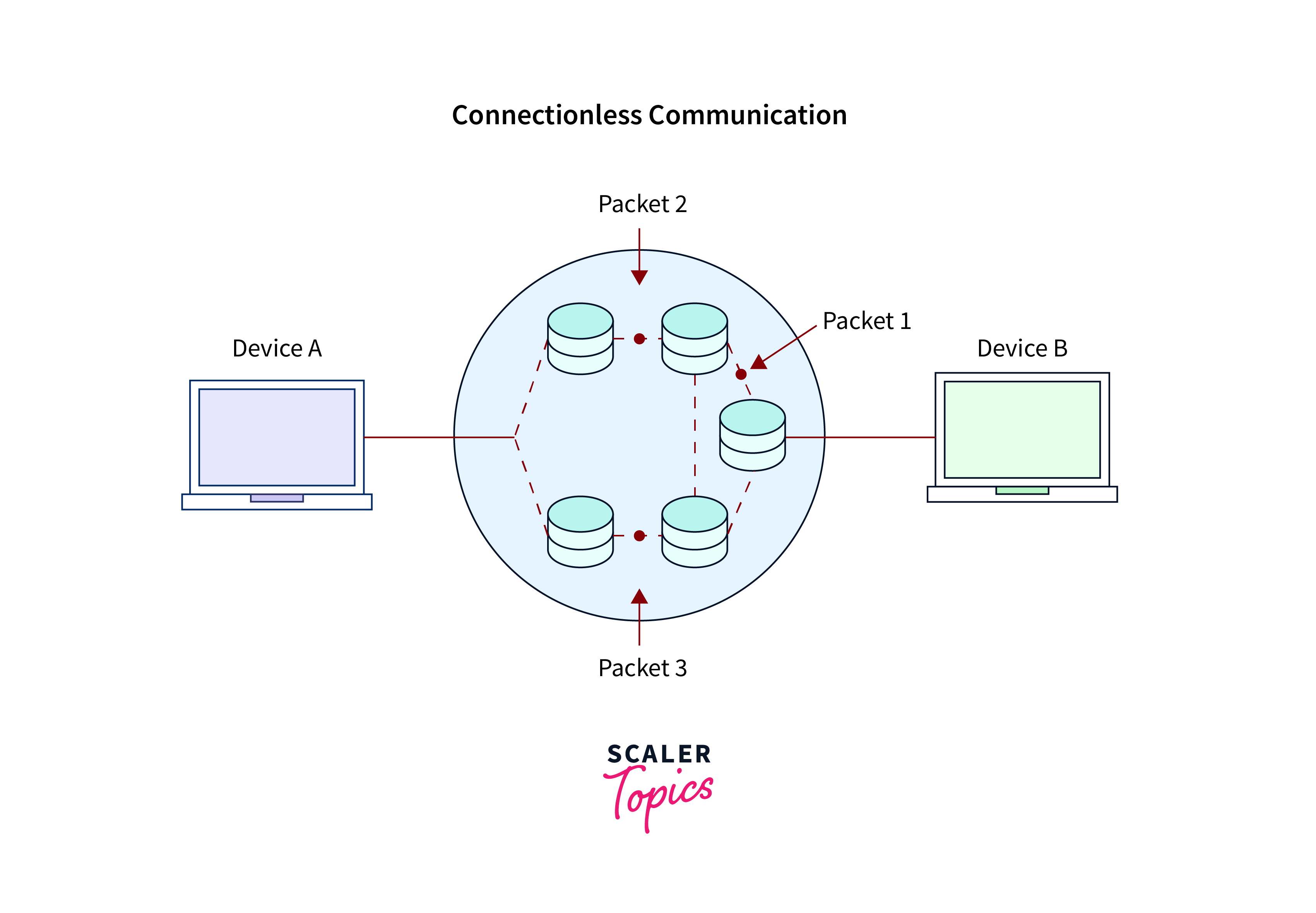Main difference between connection-oriented and connectionless is that connection-oriented service establishes a connection before data transmission whereas there is no connection establishment in connectionless service. TCP is a connection oriented and connectionless protocol is UPD. In this article, we will look at the difference between connection-oriented and connectionless services in detail.
Connection-Oriented Services
Every packet is designated to a source/destination connection in connection-oriented services. And the route for these packets is the same, which is called a virtual circuit. So the end-to-end connection is provided by the connection-oriented services for the reliable transfer of data. An end-to-end connection is the dedicated link established for data transmission. It also maintains the orders at the time of delivery and there is no miss and duplication in the information transfer. The receiving device buffer and communication channel are not congested by it.
One of the examples of connection-oriented service is Mobile connection.

What is TCP?
TCP stands for transmission control protocol and it is a connection-oriented protocol by which two or more devices can communicate with each other by connection establishments within different or similar networks. Internet protocol is used by it for data transmission from one end to another. That’s why it is referred to as TCP/IP. It ensures that there is an establishment of connection and that connection is also maintained until complete data transfer between sender and receiver.
Connectionless Services
Every packet is treated individually by the router in connectionless service. And different routes are there for the routing of packets and it depends on the decision of the router. In connectionless service, there is no guarantee of delivery of data from sender to receiver.
Data to be sent between sender and receiver is broken down into packets. And every independent packet is known as a datagram. And there may be congestion in data transmission between sender and receiver.
The destination device address is there in the packet. Working with a connectionless service is similar to the postal system working.

What is UDP?
UDP stands for User Datagram Protocol and it is a connectionless protocol by which data is transferred between sender and receiver without any connection establishment. A packet is sent by the sender along with the Destination address. It does not ensure Data packet delivery to the right destination and any acknowledgment is not generated by it for the data of the sender. And also no acknowledgement is provided to the receiver for their data. So UDP comes under an unreliable protocol.
Difference between Connection Oriented and Connectionless Services
Below is the table to explain the differences between connection-oriented and connectionless services
| Sr No | Comparison Parameters for connection-oriented and connectionless services | Comparison Parameters for connection-oriented and connectionless services | Connection Less Service |
|---|---|---|---|
| 1 | Related System | It is developed based on the working of telephone systems. | It is developed based on the working of the postal system. |
| 2. | Definition | An end-to-end connection is established before sending data over different or similar networks. | It does not establish any connection before sending data between sender and receiver. |
| 3. | Virtual path | Virtual path or connection is created between the sender and receiver. | Virtual path or connection is not created between sender and receiver. |
| 4. | Authentication | Authentication is required before sending data to the destination. | Authentication is not required before sending data to the destination. |
| 5. | Data Packets Path | Order of sent data packets is maintained means the receiver receives the packet in the same order as sent by the sender. | Order of sent data packets is not maintained means the receiver receives the packet in any order. |
| 6. | Bandwidth Requirement | Higher bandwidth is required by this protocol for the transmission of packets as it establishes a virtual path before data transmission. | Lower bandwidth is required by this protocol for the transmission of packets as it does not establish a virtual path before data transmission. |
| 7. | Data Reliability | It guarantees the transfer of data from the host to the destination so it’s a reliable protocol. | It does not guarantee the transfer of data from host to destination so it’s an unreliable protocol. |
| 8. | Congestion | As it establishes an end-to-end connection for the data transmission between sender and receiver there is no congestion. | As it does not establish an end-to-end connection for the data transmission between sender and receiver congestion can be there. |
| 9. | Examples | One of the examples of a connection-oriented service is Transmission Control Protocol (TCP). | Some examples of connectionless protocols are Internet Control Message Protocol (ICMP), Internet Protocol (IP), and Internet Control Message Protocol (ICMP). |
| 10. | Application in the real-world | Text Communication, HyperText Transfer Protocol (HTTP), Simple Mail Transfer Protocol(SMTP), etc. | Video Conferencing apps like Zoom, Skype, Gmeet, etc. |
Conclusion
- Every packet is designated to source/destination connection in connection-oriented services.
- Every packet is treated individually by the router in connectionless service.
- TCP stands for transmission control protocol and it is a connection-oriented and connectionless protocol UDP which stands for User Datagram Protocol.
- The main difference between connection-oriented and connectionless services is that connection-oriented service establishes an end-to-end connection for the data transmission between sender and receiver so there is no congestion and it ensures data transfer reliability while connectionless service does not establish an end-to-end connection for the data transmission between sender and receiver, so congestion can be there in the Connection less service.